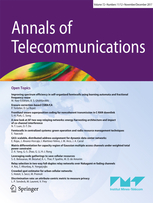Bio: Dr. Gerard Le Lann holds French degrees, a M.S. in Applied Mathematics (University ofToulouse), an Engineering Degree in Computer Science (ENSEEIHT, Toulouse), and a Ph.Din Computer Science (University of Rennes). He started his career at CERN, Geneva(Switzerland), and joined IRIA (now INRIA) in 1972. His main areas of research aredistributed dependable computing and networking, real-time computing and networking,proof-based system engineering and, more recently, mobile wireless safety-critical cyber-physical systems, including ad hoc vehicular networks. At Stanford University (1973-74),working with Professor Vint Cerf, he was involved in the design of what became known asthe Internet TCP/IP protocol.
In 1977, he published one of the founding papers on distributed fault-tolerant computing. Inthe early 80’s, he published innovative results on non-blocking concurrency control indistributed databases, which work was eventually transferred to Digital Equipment Corp. Inthe mid 80’s, he co-patented a deterministic version of the Ethernet protocol, which became aFrench Navy standard.
More recently, he has been conducting research on safety and privacyissues as they arise with fully automated driving. He has published on time-bounded wirelesscommunications, distributed agreements and distributed real-time transactions in ad hocvehicular networks, based on radio or optics.
In 2012, G. Le Lann has received the Willis Lamb Prize from the French Academy ofSciences for his work applicable to defense systems.Besides its current affiliation with INRIA as Research Director Emeritus, G. Le Lannis an international consultant. He has conducted a number of audits and managed more than60 contracts in his research areas, for US, European, and French organizations or companies.
Safety, privacy and cybersecurity in next-gen vehicular networks
Abstract: Human lives are at stake in networks of communicating automated vehicles. We introduce the SPC (safety, privacy, cybersecurity) problem which arises in these life/safety-critical networked systems. Breaking away from the standard approaches based on omnidirectional wifi DSRC technologies, we introduce protocols for inter-vehicular coordination aimed at preventing collisions in hazardous scenarios (hard-braking in strings, lane changes, etc.) designed for very-short range inter-vehicular communications enabled by 5G technologies. Essential cyberphysical constructs are presented, as well as a deterministic MAC protocol which also achieves sublinear time string-wide message dissemination. That is crucial for safety. Privacy (immunity to eavesdropping) and cybersecurity (safety immune to cyberattacks) are properties that derive from pseudonymous and anonymous naming schemes at the core of these inter-vehicular coordination protocols.
Bio: I.F. AKYILDIZ is the Ken Byers Chair Professor with the School of Electrical and Computer Engineering, Georgia Institute of Technology, Director of the Broadband Wireless Networking Laboratory and Chair of the Telecommunications Group. Dr. Akyildiz is also Megagrant winner in Russia. He is Megagrant lead researcher at the Institute for Information Transmission Problems, Kharckevich Institute, Russian Academy of Sciences in Moscow, Russia since January 2018. He is the Editor-in-Chief of Computer Networks (Elsevier) Journal since 2000 and the founding Editor-in-Chief of the Ad Hoc Networks Journal (2003) both published by Elsevier. Dr. Akyildiz is an IEEE FELLOW (1996) and an ACM FELLOW (1997). He received numerous awards from IEEE and ACM. Due to Google scholar, his papers received over 103.5+K citations and his h-index is 115K as of March 2019. His current research interests are in 5GB Wireless Systems, TeraHertz Band Communication, Internet of xThings.
Intelligent Environments to Realize Communication in 6G Wireless Systems
Abstract: Electromagnetic waves undergo multiple uncontrollable alterations as they propagate with- in a wireless environment. Free space path loss, signal absorption, as well as reflections, refractions, and diffractions caused by physical objects within the environment highly affect the performance of wireless communications. Currently, such effects are intractable to account for and are treated as probabilistic factors. This talk proposes a radically different approach, enabling deterministic, programmable control over the behavior of wireless environments. The key enabler is the so-called HyperSurface tile, a novel class of planar meta-materials that can interact with impinging electromagnetic waves in a controlled manner. The HyperSurface tiles can effectively re-engineer electromagnetic waves, including steering toward any desired direction, full absorption, polarization manipulation, and more. Multiple tiles are employed to coat objects such as walls, furniture, and overall, any objects in indoor and outdoor environments. An external software service calculates and deploys the optimal interaction types per tile to best fit the needs of communicating devices. Evaluation via simulations highlights the potential of the new concept.
Talk is based on the following papers and on the VISORSURF project:
- 1. C. Liaskos, S. Nie, A. Tsioliaridou, A. Pitsillides, S. Ioannidis, I. F. Akyildiz. “A New Wireless Communication Paradigm through Software-controlled Metasurfaces” IEEE Communication Magazine, Sept. 2018.
- 2. C. Liaskos, A. Tsioliaridou, A. Pitsillides, S. Ioannidis, I. F. Akyildiz. “Using any Surface to Realize a New Paradigm for Wireless Communications” Communications of the ACM, Nov. 2018.
Patent applied for.
Bio: Dr. Petit is the Senior Director of Research. He is in charge of leading projects in security and privacy of automated and connected vehicles. He has conducted extensive research in detecting security vulnerabilities in automotive systems. He published the first work on potential cyber attacks on automated vehicles and has supported communications security design and cybersecurity analysis through OEM and NHTSA-sponsored projects. He received his PhD from Paul Sabatier University, Toulouse, France.
Cybersecurity of Automated Vehicles Networks
Abstract: Cybersecurity of automated vehicles (AV) is paramount to successfully deploy this technology. Indeed, attacks on AV have been recently demonstrated. These attacks targeted the vehicle itself, i.e. its sensors (LIDAR, RADAR, Camera, Ultrasonic sensor, GPS) and its perception. The security community agreed on existing challenges, but no holistic solutions have been fully worked out yet. We will discuss challenges facing designers of AV networks and present promising solutions.








